Matador Network's Blog, page 870
April 29, 2020
Town in Italy printing its own money
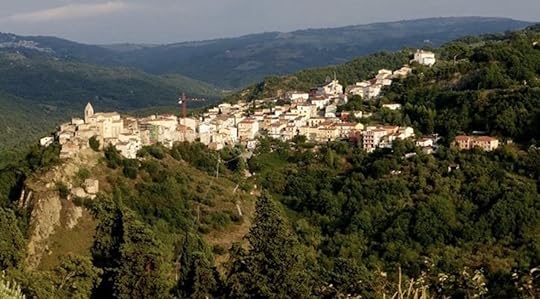
The pandemic has put economies around the world in dire straits, leading to large-scale bailouts and relief programs. One town in Italy, however, is getting creative when it comes to wiggling out of its tough financial situation. Castellino del Biferno, a small town of 550 people, about 160 miles southeast of Rome, has started printing its own “Ducati” bills and distributing them to the town’s most vulnerable residents.
Worth one euro each, people can then redeem the Ducati bills for essential goods at shops, much like food stamps. Every two weeks businesses can return the bills to the town, and receive an equivalent number of Euros.
According to Enrico Fratangelo, the town’s mayor, “We decided to mint money to make sure the local economy could withstand the impact of the situation. However small this economy may be, there are three or four businesses still open, without considering bars or pubs.”
The initiative is the result of a $6,000 cash grant from the Italian government, designed to set up a food voucher program for the town’s lower income residents.
The banknotes feature pictures of local attractions, and 4,000 of them have already been redeemed at the town’s butcher store, euronews reported. 

More like this: The 7 coolest currencies in the world and the stories behind them
The post This town in Italy is printing its own money to help vulnerable residents during the pandemic appeared first on Matador Network.
April 28, 2020
England Coast Path top open in 2021
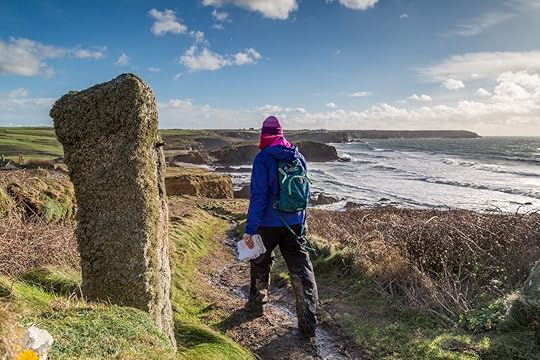
As a country that’s part of the island nation of the UK, England is well known for its coastline, which ranges in topography from towering, chalky white cliffs to sweeping, wind-blown grasslands leading down to white sandy beaches. With such an idyllic shoreline to explore and admire, walking and rambling have become some of the top outdoor pursuits around the country. That, plus England’s right-of-way laws that enable access to the beaches and outdoor areas, means that the entire countryside is rife with long-distance paths, including one that stretches along the entirety of its coast and is on the cusp of being finished: the England Coast Path. It will be the longest coastal path in the world and is set to be completed at the end of this year and officially launched in early 2021.
How long is it?
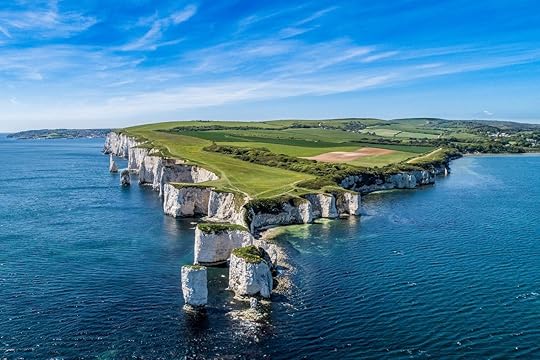
Photo: Lissj/Shutterstock
The England Coast Path will be the longest marked and managed coastal pathway in the world, clocking in at 2,795 miles. While the official route will be unveiled early next year, at the moment large sections of the path have been completed and open to the public for some time. Some of these trails have existed and been used for years, but the Coast Path will officially link and connect all the preexisting routes, as well as improving signage and the quality of the paths and walkways to ensure safety and accessibility. Not only will walkers and hikers be able to enjoy nature, but they can also pass by and explore historic towns, villages, castles, lighthouses, and ruins.
The Coast Path is being completed by Natural England, a part of the UK government tasked with protecting and promoting England’s natural.
How long would it take to do the Coast Path in its entirety?
Although some people have walked the entire coastline before, it’s never been done on a network of maintained paths, which would improve time by offering easier navigation and movement, as well as ease of access. So it’s hard to say with certainty how long it would take to walk the official Coast Path until someone tries it. But estimates say around seven to 10 months, depending on weather and physical stamina.
But the good news is that, if you can’t set aside half a year or more to walk the whole coastline, you can tackle smaller sections one at a time.
What sections are open?
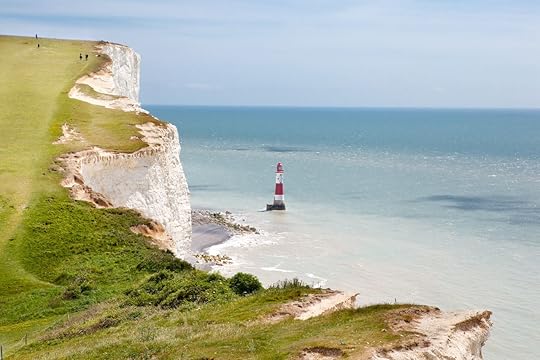
Photo: Lilly Trott/Shutterstock
There are hundreds of trails, both short and long, that already exist along sections of the coast, so if there’s a particular area you’re interested in exploring, check that region’s tourist website or section of the National Trails website to confirm if there are any trails or paths already open.
The North West, North East, South East, and South West regions are already listed on the National Trails English Coast Path website, with the option to click on each region and find out more about paths in each area.
There are also 11 existing coastal trails that will be linked into the overall Coast Path that cover nearly 1,500 miles of coastline. These include the 630-mile long South West Coast Path, the Cumbria Coastal Way (185 miles), Saxon Shore Way (163 miles), and many other smaller paths ranging from 20 to 60 miles in length. So there’s already a fair amount of options available to discover parts of England’s shoreline.
Where is the starting point of the Coast Path?
Theoretically, anywhere! Depending on where your travels in Britain take you, you could just hop onto the path and start walking. However, if you intend to do the whole Path and don’t want to be retracing your steps, it makes sense to start from either the South West border with Wales or in the North East from the town of Berwick-upon-Tweed near the Scottish Border.
What are the highlights?
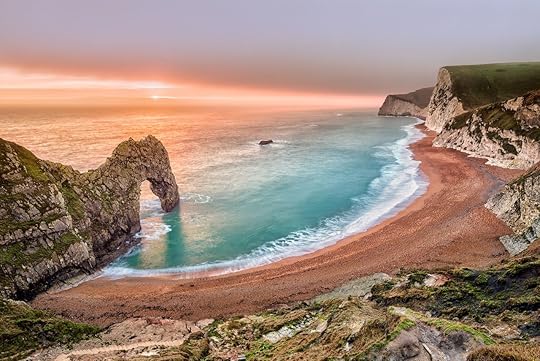
Photo: Luigi Trevisi/Shutterstock
With its dramatic ridges and rock formations, the World Heritage Jurassic Coast in southern England is a destination worth discovering on foot. Stretching about 95 miles along the shores of the English Channel from Studland Bay to Exmouth, walkers will encounter epic sea cliffs like those at West Bay and wind-and-water-sculpted formations like the famous Durdle Door. The rocks along this part of the coast are a remarkable geological record of the Mesozoic Era, which ran from 250 to 65 million years ago, so finding fossils and other evidence of Earth’s history is commonplace. For walkers who enjoy city life, you’ll be able to pass through and spend time in legendary cities like Liverpool, the seaside resort of Blackpool, and Brighton, which is well-known for its beach and Palace Pier.
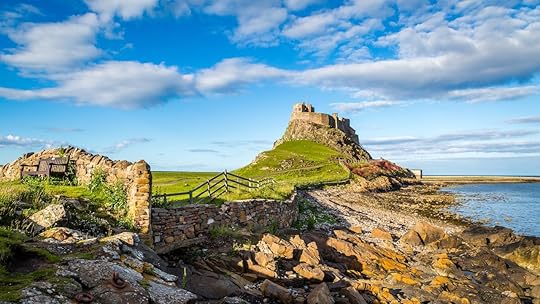
Photo: Michael Conrad/Shutterstock
All along the coast but especially in the North East, you’ll also have the chance to pass through small towns and fishing villages, like the incredibly charming Robin Hood’s Bay, a tiny enclave of stone cottages and houses nestled against the shore. You’ll also get to see historic castle ruins like the historic Bamburgh Castle, located in Northumberland, where the kings of the region once reigned.
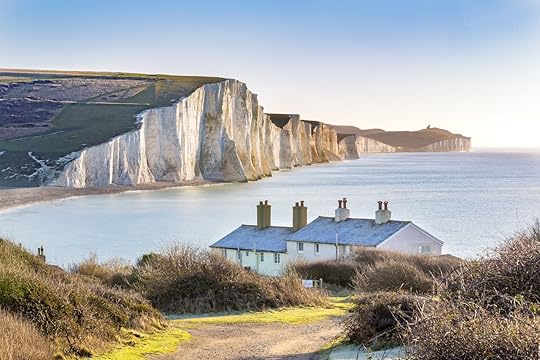
Photo: Paul Daniels/Shutterstock
South Downs National Park, England’s newest national park, also makes for a lovely hike with its rolling hills and beautiful views of the Seven Sisters South Downs Hills, which form part of the famous chalky-white cliffs that abut the English Channel.
Finally, the northwest portion of the Coast Path is and will be definitely a popular part of the route, as it passes by some of England’s most famous natural landmarks and cities, including the Lakes District, Liverpool, and Black Pool.
What kind of gear would you need to bring?
As with any long-distance, multi-day hike or trek, you’d need to bring backpacking gear like a waterproof daypack, good hiking shoes, a reusable water bottle, sunscreen, comfortable hiking pants and shirts, a sunhat, rain jacket, fleece, snacks and food for the trail, and, if you need them, hiking poles. Packing clothing layers that you can take off and put on as the weather demands is essential to your comfort and safety.
Waterproof clothing and gear is also a must; it is England and you are walking along the coast, after all.
Camping along the way in designated sites is, of course, also an option, but since the path also runs through towns and villages, you will routinely be back in civilization and can have the option to stay in hotels, hostels, or rentals if you’re not a big camping enthusiast.
When would be the best time of year to try out the Coast Path?
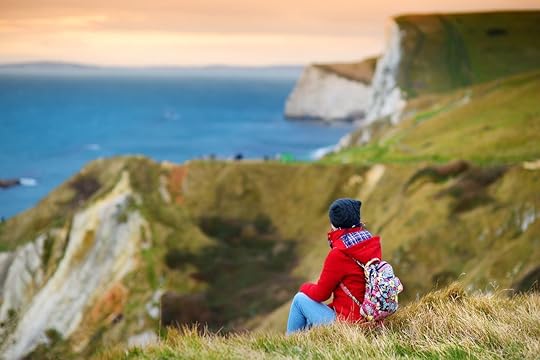
Photo: MNStudio/Shutterstock
With its warm temperatures and fair weather, summer is the best time to plan to go hiking or walking in Britain. The weather is generally at its best, allowing you plenty of sunshine, warmth, and longer days to hike, and you’ll get to enjoy the British countryside in all its seasonal splendor. But even then, the weather is unreliable, so always pack for rain and storms.
If you were planning on trying to complete the entire Coast Path, you’d need to plan for at least half a year — starting in spring, hiking through summer, and aiming to complete the route in the fall would be best, as you’re avoiding the dreary and cold winter months when temperatures dip into the low 40s, and there’s even the possibility of snow. You’ll still encounter rain and storms, but you’ll also have the benefit of seeing flowers in the spring, summer greenery, and fall colors.
Due to COVID-19, will the route still open on schedule?
Since the Coast Path is supposed to be finished in late 2020 or early 2021, which should be far enough in the future that its launch and the “Year of the English Coast” rollout — which will include a roster of promotional events like beach clean-ups, art trails, and food events — can still happen according to schedule.
But with many non-essential work functions and projects now halted due to coronavirus, it’s possible there could be delays to construction and therefore a short delay in the path being launched. In the next few months, a clearer picture is sure to emerge, so check the official England Coast Path website or Visit Britain for updates and information. 

More like this: How to layer clothing for spring hikes
The post England is opening the world’s longest coastal path. Here’s how to plan your walk. appeared first on Matador Network.
A US-Canada relationship in COVID
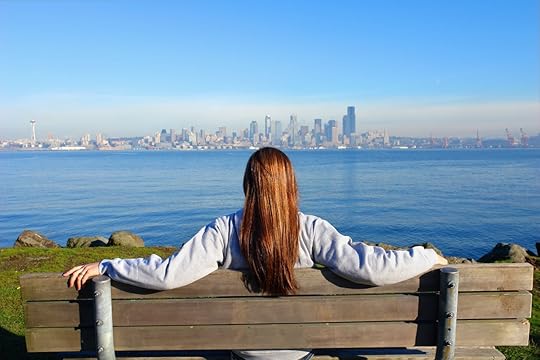
The current pandemic has changed reality for all of us. It has taken away aspects of life we considered rights and reminded us that they were only privileges. One thing we all took for granted was freedom of movement, and to see who we want, when we want, even if they happened to live in another country.
I’ve spent most of my life in Seattle and bounced between the US and Canada without much thought. When my boyfriend moved from Montreal to Vancouver about one year ago, it seemed like the perfect way to make our relationship plausible. Suddenly, instead of suffering through months apart, we were together almost every weekend.
Then the unthinkable happened, on March 21, 2020, the US and Canada agreed to close the border to non-citizens/residents (exempting commerce and public health workers) for 30 days to prevent the spread of COVID-19, and we were suddenly unwelcome in each other’s countries. A few weeks later, the two sides agreed to extend the closure until May 21, 2020, and I quickly realized that my two-year relationship was at the whim of two governments.
Americans and Canadians have historically enjoyed a very close partnership, which has allowed for easy transfer of goods and people across the border. However, the historic closure is seriously questioning the future of the cross-border relationship, as well as my own.
The US-Canada border
In the past, the two countries worked together during international crises. During WWII the two governments essentially abolished the border to allow for seamless collaboration in the joint wartime effort. The only other time in modern history the border closed was in the aftermath of 9/11.
However, during the current global crisis, the media coverage has painted a strained partnership, often implying that the US and Canada were at odds in their efforts to contain COVID-19. A large order of N95 masks destined for hard-hit Quebec was reportedly intercepted in Ohio, and the US manufacturing company 3M was told not to provide masks to other countries, including Canada. Even more surprising, President Trump alluded to the possibility of militarizing the border, something that had only been done once, during the American Civil War. In Canada, Deputy Prime Minister Christina Freeland described the possibility as “very damaging to our relationship,” a not-so-subtle warning that efforts should be collaborative, not unilateral.
These reports are the exact opposite of the complete cross-border cooperation experts say is necessary to fight the virus. The constant COVID-19 news coverage already provided enough anxiety to my daily life; the addition of primarily pessimistic reports about the cooperation between the US and Canada made me increasingly uneasy about the future.
Border closures, travel restrictions, and a Canadian boyfriend abroad
In early March, my boyfriend flew to Brazil for a month-long assignment, and at the time, I figured I’d see him again a few weeks later. Not long after his arrival, the first cases were reported in Brazil while new cases rose across the US and Canada, and stay-at-home orders started to be implemented. I briefly wondered if he should come home early.
A few weeks later, his client canceled the project, São Paulo announced statewide travel restrictions, and my anxiety increased each day.
“I know you want me to get on the first flight out of here, but I think it makes sense to wait out quarantine instead of risking travel,” he told me over the phone. We were still naive enough to think the situation would improve in the near future.
The next day, the US and Canada announced a joint border closure without exceptions (the initial closure announcements excluded US/Canadian citizens from movement restrictions), and the airline canceled his flight home, without a rebooking. My anxiety kicked into overdrive, and I frantically researched flights. I quickly came to the sinking realization that alternatives were few and far between. Direct flights to Canada didn’t exist, the best itinerary we could find required two layovers in the US, first Houston then in San Francisco before his final leg to Vancouver.
The media’s coverage of constantly changing global travel restrictions made me wary of his ability to transfer through the US, even though there wasn’t another way back to Canada. It seemed new policies were put into place daily. In the days leading up to his flight, I triple-checked the US State Department’s travel restrictions, Global Affairs Canada’s policies, and panic called United Airlines to verify he’d be allowed to travel through the US as a Candian citizen.
Everything assured me Canadians were still allowed to transfer through the US from abroad, as long as they had proof of onward travel to Canada and hadn’t been to barred countries (as of writing China, Iran, and most of Europe) within 14 days of travel. In order to be allowed back in Canada, my boyfriend needed proof of citizenship and to be symptom-free on the day of his flight.
Despite reading and hearing assurances, I didn’t breathe easy until he texted that he was at the gate ready to board. There were a grand total of three flights out of Sao Paulo’s international airport that day, including a canceled one to New York, that he’d almost booked. I didn’t fully exhale in relief until he’d landed in Vancouver, even though we still had a closed border between us. At least he was home safe.
The future of cross-border cooperation and my relationship
While the media has portrayed the relationship as currently rocky, experts on American-Canadian relations provided a much more positive outlook. Former Canadian Diplomat Colin Robertson recently said in an interview that despite not initially coordinating efforts, the two countries are “…approaching this, I think, now, in tandem”.
The Wilson Institute’s Canadian Studies Center discussion between international affairs experts specializing in US-Canada relations supported Robertson’s statement. The panelists agreed that the two countries are finally working together, and many mentioned that they’re seeing more cooperation than they did during the post-9/11 border closure.
My long-term outlook significantly improved after listening to experts, although I recognized crossing the border will likely change, as did most travel post-9/11. Currently, the number of cases at home here in Washington State are declining, and Canadian models show the country is unlikely to reach the drastic numbers of other countries. These improvements are mostly thanks to social-distancing measures and travel restrictions, cooperative efforts that the Wilson Institute’s experts agreed are necessary in helping both countries fight COVID-19. This is positive news for the future of my relationship as cross-border cooperation increases the chance that the ease of travel will return.
Yet at the same time, short-term, it’s hard to reconcile my personal struggle with the pandemic at large. At the beginning of all this, I didn’t really allow myself to feel sad or worry much about the future. I was so preoccupied with getting my boyfriend home from Brazil that I didn’t have the energy to think beyond that. Now that I’ve had some time to pause and reflect, all I feel is unease. I feel an invisible dark cloud hovering above me, made up of envy as I watch others isolate themselves with their partners, uncertainty for the future, and guilt over being upset, when so many other lives have been more negatively affected.
I never thought I’d miss the several hours’ drive north and answering endless questions at the border every other weekend. I’d also never imagined there would be a day when my US passport would prohibit me from entering Canada, a testament to the close relationship all those international relations experts so heavily praised. Like many things pre-pandemic, I took cross-border travel for granted and am now faced with the uncomfortable awareness that it’s a privilege that can be taken away very rapidly.
I’m starting to realize that questions concerning the future of the US-Canada relationship are very applicable to my own. What will our future look like? Will we appreciate each other more? Become better communicators? Appreciate the value of partnership? Realize we need each other more than we thought? The world will never be the same after COVID-19, and only time will tell what our new global reality looks like. However, I know I’ll never take a trip across the northern border for granted again, and I’ll be a bit more thankful for each wait in the customs line. 

More like this: 8 ways to prepare yourself to be a better traveler when life returns to normal
The post A cross-border relationship is never easy. During a pandemic, it’s terrifying. appeared first on Matador Network.
Vietnamese cuisine in New Orleans
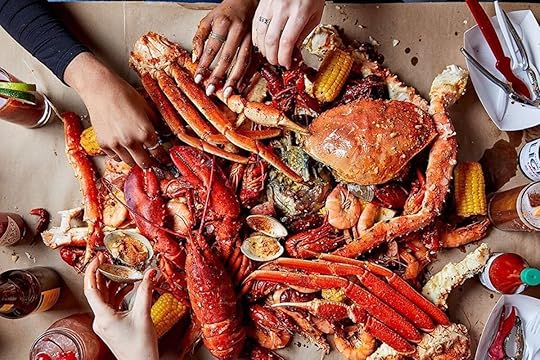
In 1975, as the fighting in Vietnam intensified and the event that would come to be known as the Fall of Saigon seemed imminent, Peter Ngyuen’s father fled the city on a boat. He ended up in Seattle before making his way to New Orleans, where he met Ngyuen’s mother and started a family. Today, his son is a thriving member of the New Orlean’s community: Peter Ngyuen is the owner and chef of Banh Mi Boys, which incorporates Creole flavors into the traditional Vietnamese sandwich.
Ngyuen’s father’s story is not an uncommon one in Louisiana. According to data from 2010, Louisiana has the 10th-largest Vietnamese population in the country. Today, New Orleans’ Vietnamese population numbers around .
Catholic organizations spearheaded efforts to welcome refugees fleeing the Vietnam War and provide them with a safe haven. In Louisiana, refugees found a hot subtropical climate not all that different from Vietnam and a cuisine that shares an affinity for seafood and spice. In fact, Vietnamese refugees were instrumental in helping invigorate the fishing and shrimp trade. As of 2014, of the state’s commercial shrimpers were Vietnamese refugees.
Food has been a bridge between cultures since the Vietnamese community first began to take root in New Orleans. Despite the fact that Katrina devastated the Versailles neighborhood where many Vietnamese refugees settled, the Vietnamese restaurant scene is thriving.
“I just see that, more and more, New Orleans restaurants incorporate Vietnamese flavors, rather than the other way around,” Ngyuen tells me. “They’re using a lot of Vietnamese vegetables, for instance.”
At Banh Mi Boys, Ngyuen plays with the traditional Vietnamese sandwich, adding not just flavors he grew up with but also barbecue and Hawaiian ingredients. In addition to traditional options like grilled pork and grilled shrimp, he offers Vietnamese sandwiches with fillings like Bang Bang Shrimp, fried gulf shrimp tossed in a sweet thai chili sauce, Spicy Asian BBQ Brisket, pulled pork, honey Sriracha shrimp, and braised pork belly.
“Nobody has really modernized the banh mi,” Ngyuen says. “There were already a bunch of pho places around here and I wanted to focus on the bahn mi, and at that time, it was secondary.”

Photo: Peter Nguyen
For Ngyuen, Vietnamese and Creole cuisine are an obvious match. There are similarities in climate, flavors, and ingredients — especially when it comes to spice, garlic, and seafood.
“Both were French colonies and both are river deltas, both have a lot of brackish water seafood, [and] the growing seasons are very similar,” adds Michael Gulotta, a New Orleans native and chef at Mopho, which is focused on pho, the ‘“po-mi” sandwich, and curry and vermicelli bowls with a distinctive New Orleans twist.
In his po-mi sandwich, for instance, the protein is a New Orleans staple — fried shrimp, oysters, spicy sausage patties — but the vegetables and garnishes are all Vietnamese, from pickled vegetables to mint, clinato, cucumber, and jalapeno. In addition to incorporating the obvious seasoning to Southern dishes, like lemongrass, chilis, and ginger, Gulotta has learned how to incorporate ingredients that might not be as familiar to newcomers to Vietnamese cuisine.
“So much of South Louisiana’s food is seafood, so we use fish sauce in lieu of salt a lot,” Gulotta says. “Another fun one is fermented black beans. We do a gumbo that we’re pretty well known for, and we use fermented black beans in it, and it adds this whole other layer of richness.”
At first, New Orleans residents were skeptical that Vietnamese ingredients have a place in Creole cuisine. Ngyuen says that, when he opened in 2015, many of his first customers had never tried banh mi before. It became part of his job to “educate” people on traditional Vietnamese dishes, he says, a sentiment that Gulotta also echoes.
“We ended up being the gateway drug to Vietnamese food for people who had never had it before,” Gulotta says. “People would come in and say, ‘Why is there this meat spread on my po boy,’ and we would say, ‘That’s the pate, it’s very traditional.’ And people would be like, ‘We don’t want that.’
“The landscape has totally changed,” Gulotta continues. “When we opened six years ago, people thought we were nuts. And now a lot of restaurants have adopted the same approach.”
Vietnamese cuisine has become so popular in New Orleans that it’s even found its way into the crawfish bowl, a distinctly Cajun dish from southwest Louisiana and Houston, Texas. The cuisine in New Orleans, on the other hand, is Creole, an entirely different food tradition that has nonetheless fully embraced the Viet-Cajun crawfish.
“Everyone always equates New Orleans with Cajun, and we’re not,” Gulotta explains. Still the trend is undeniable. “Vietnamese restaurants have started doing [crawfish] here because people started hearing about it from Cajun country, so now people are like, ‘We want Vietnamese crawfish,’” he continues. “There are now a bunch of Vietnamese boil houses that have opened up in the last six years.”
Spots like Big EZ Seafood, which originated in Huntsville, Texas, and now has a location in Gretna, Louisiana, just 10 minutes outside the city, is one of the leaders of the Viet-Cajun food movement, which has since exploded in popularity.
The blending of Vietnamese and Cajun cuisines isn’t limited to the Gulf Coast, either. Mike Khuu, chef and owner of Pho Bar and The Boil, which has locations in New York and New Jersey, visits New Orleans twice a year. On a visit a decade ago, a friend invited him to a crawfish boil, and inspiration struck. He knew he had to bring this backyard tradition to the East Coast restaurant scene — but he wanted to give it an unmistakable Vietnamese twist.
“The boil [was] created out of that fusion — Cajun and Vietnamese,” Khuu tells me. “We add some garlic powder, we add a little lemon grass, and celery sticks, and a little bit more citrus.”
Though chefs like Khuu are in the business of reinventing classic New Orleans cuisine to make room for the vibrant, bright flavors of Vietnam, he thinks the best Vietnamese restaurants in the city are focused on classic dishes typically cooked at home.
“A lot of the Vietnamese restaurants that are in New Orleans are mom and pop shops,” Khuu says. “That’s what makes the food so enticing in that area. The food never changes, so you get history and culture.” 

More like this: To understand New Orleans, eat like a chef
The post appeared first on Matador Network.
Chris Burkhard Iceland photography
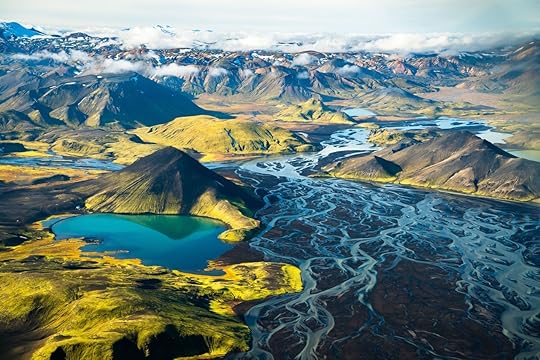
Iceland’s glacial rivers flow from the edges of the country’s Highlands, often spanning 100 miles or more before spilling into the frigid waters of the North Atlantic. At Glacier’s End is an anthem to these glacial rivers and those working to protect them, a stunning book uniting the work of renowned surf and adventure photographer Chris Burkard and writer Matt McDonald.
The coffee-table-perfect collection showcases Burkhard’s photographs of the Icelandic Highlands over the span of more than seven years. McDonald’s words tell the stories behind the photos and give us background on the urgent need to protect these rivers and the glaciers that spawned them through the creation of a conservation area under the name Highlands National Park.
Matador spoke with Burkhard and McDonald and learned that the goal of the book, like the goal of the park itself, is to both protect the sacredness of the Icelandic Highlands and simultaneously provide an economic driver to the country’s small coastal towns. And for all of us, a new reason to visit Iceland.
Advocating for the protection of Iceland’s glacial rivers
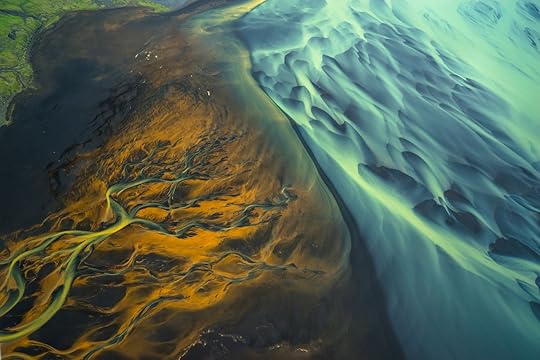
Photo: Burkhard Studios
Over several years, Burkhard and McDonald undertook multiple research trips to Iceland where they met and worked alongside Steinar Kaldal, the former director of the project to create the park and a current government advocate for its promotion. The pair flew with Haraldur Diego, known to friends and clients as “The Volcano Pilot,” whom Burkhard had met on his first photography trip to the Highlands.
As striking as they are, Burkhard’s aren’t photos of pleasure any more than McDonald’s are words of wanderlust. Rather, they’re a conduit for the threatened rivers and the protection needed to keep them flowing to the sea. At Glacier’s End is historical in its text and imagery. Readers learn about Iceland’s first settlers, modern development, and current conservation efforts.
“It’s not that Iceland can’t handle the tourists,” Burkhard says. “The problem is that we’ve kind of created this scene where people go there, and they all want to explore the top five things to do. Any time that you get 20 minutes off the trail, all of that really fades away.”
Burkhard’s photos are page stoppers in the sense that many, if not most, lead the reader to think they’ve reached the apex. It can’t possibly get better, more visceral, more surreal. Then they turn the page and reads McDonald’s words documenting the threats posed to the landscape. During his photography trips to Iceland, Burkhard came to learn that the very places he was photographing were at risk of being dammed by the extraction industry. This wasn’t originally supposed to be an environmental call to action — but through his work and the connections he made on the ground, Burkhard realized there was no other proper way to tell the story.
“I realized I had no business photographing these places unless my work could somehow raise a voice for these voiceless rivers,” Burkhard says in the book’s introduction.
Tourists have the power to save Iceland’s glacial rivers, Burkhard and McDonald argue, through the simple act of visiting Highlands National Park.
“This is a unique project because the Icelanders are so on board with the message, and we’re able to be vehicles to disseminate that to Americans and those outside Iceland,” McDonald says. “They really believe that (adventure tourism) is their long-term solution. It’s conservation-oriented, but beautiful and fun as well.”
“It’s nice to have a project that tells people exactly where to go to make a difference,” Burkhard says.
Building momentum for a national park
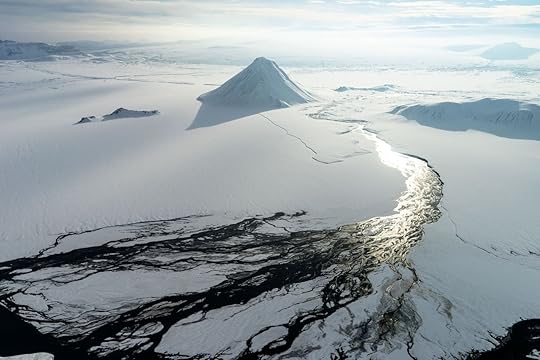
Photo: Burkhard Studios
Iceland’s tourism boom is a success story that every tourism promoter dreams of. In less than a decade, the small, isolated island nation has seen tourism numbers quadruple from 459,000 in 2010 to more than two million in 2017. The problem is that those tourism dollars aren’t flowing equally across the country. The bulk of Iceland’s tourism is centered in the country’s southwest, where both its capital and largest city, Reykjavik, and top tourist attraction, the Blue Lagoon, are located. Very few experience the beauty of the Highlands — an area that covers 40 percent of the country — or the glacial rivers the area generates.
This is a double whammy to those living in the small coastal towns caught in limbo between the decline in Iceland’s fishing industry and whatever comes next. Many thought that international aluminum producers were that step. Aluminum mines, lured to rural Iceland’s landscape by the promise of dammed rivers and cheap energy for their operations, have underdelivered on promises of jobs. Due to damming, the extraction industry also stands next to climate change as the biggest threat to Iceland’s glacial rivers.
“The reason we made this book is to advocate for these places that people can experience that are almost off the map,” Burkhard says. “There are a lot of parts of the country, a lot of towns, that would really benefit from tourism. For example, you have these folks that are lifetime farmers, that have created a farm stay for tourists that never came. Tourism is in many ways a savior to the issues with the extraction industry.”
As more attention comes to the idea of the park and the importance of the glacial rivers, public perception is changing. This has allowed officials with the Icelandic government to work with local conservationists to create Highlands National Park. “It’s a matter of uniting not only these small towns but the interest groups that really care about using these wild places,” says Burkhard.
Putting life’s work toward a valuable cause
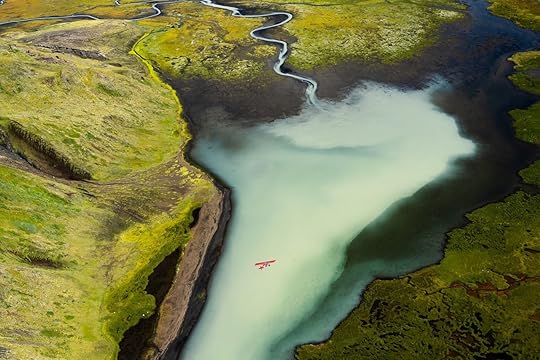
Photo: Burkhard Studios
On the surface, At Glacier’s End is a collection of abstract aerial photography. Deeper, it’s a story — told visually and verbally — of an adventurer pinpointing his passion. In conjunction with the conservation efforts it highlights, the book is a testament to travel as a cause for good.
“If it wasn’t for the gift of travel, if it wasn’t for the gift of flight, all of these global issues that we care so deeply about, we would never know about,” Burkhard says. “These are truly our eyes to the world. I think that the call to action I have is that I want to be a more educated, better traveler. I want to be someone that goes to places with a purpose and with the hope that I can understand the issues there and speak out for them, no matter how big or small my audience is.”
He continues, “I honestly feel like there’s no greater joy than being able to use your talent for a place that you know needs protection. As a photographer, as a storyteller, you have the ability to witness a place you love or care about and give a voice to it. That, in and of itself, has been such a cool process.”
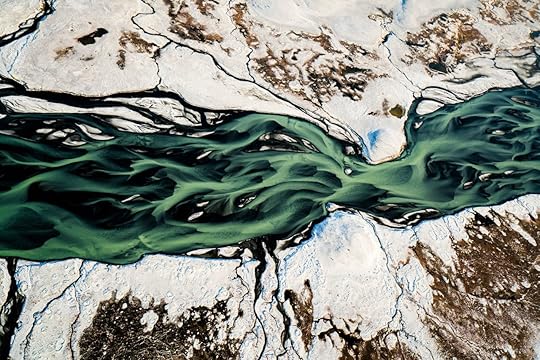
Photo: Burkhard Studios
Rarely is the need for conservation told so thoroughly yet so succinctly. The book offers a historical glimpse of the massive island from its earliest settlers and literature-rich commonwealth period through foreign occupation and independence, economic struggle, and budding prosperity. Iceland’s glaciers and rivers are the backbone throughout.
In Burkhard’s photos, the little Cessna airplanes casually cruising through the stunning natural surroundings stand — fly, more accurately — as a reminder of how small we actually are.
“In many ways, this is a dream project in the sense that any time you can add a message that speaks to one of the major modern struggles of humanity — coexisting and trying to keep wild places wild — it’s so cool to be able to do that,” McDonald says.
Now it’s on us, as travelers, to help Iceland conserve its glacial rivers and wild natural landscape. Grab a copy of At Glacier’s End and, should you plan a trip to Iceland, visit the future Highlands National Park. 

More like this: The best road trips in Iceland -- from three days to two weeks
The post Chris Burkhard shares rare images of Iceland’s glacial rivers in a stunning new book appeared first on Matador Network.
Iroquois White Corn Project
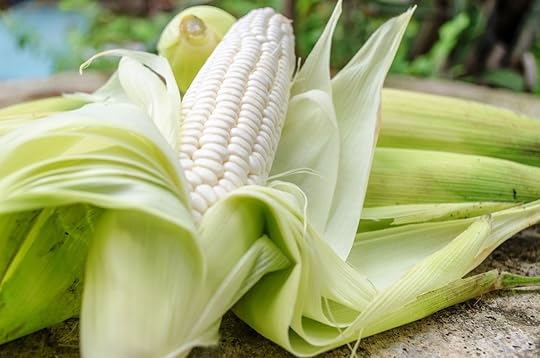
A simple but powerful philosophy guided the work of Dr. John Mohawk, an activist, historian, and member of Seneca Nation: Sometimes you have to look to history to find the food that makes you feel best.
Mohawk, who lived on the Cattaraugus Indian Reservation, was a first-hand witness to the effects that displacement and reliance on processed food have on the Native American communities of western New York. He believed that revitalizing indigenous agriculture would be a step in the right direction, and he aimed to bring once-abundant white corn back to Iroquois land (the Seneca are one of six nations that make up the Iroquois people).
“He saw that our people were being affected by diseases like diabetes, heart disease, and all the complications that come with a poor diet,” says Peter Jemison, a member of Seneca Nation and a cousin of Mohawk, who passed away in 2006.
“We weren’t eating our traditional foods,” Jemison continues. “Mostly fast food was available on the reservation, and so people were eating mostly McDonald’s, Burger King, doughnuts, and the rest of it. Unfortunately, our people put on a lot of weight and experience all the effects of a poor diet.”
So Mohawk, along with his wife Dr. Yvonne Dion Buffalo, began the Iroquois White Corn Project. The project is an effort to re-introduce traditional white corn and white corn recipes to the region. In the 18 years the project has been running — with a brief interruption — it has been a qualified success.
A stable diet undone by destruction
For centuries, the native people in the Finger Lakes region of New York relied on ingredients known as the Three Sisters — squash, beans, and corn — as the foundation of their diet. The ingredients provided protein, fiber, and vitamins and were considered, according to Jemison, a “near-perfect” set of foods.
In the 17th century, white corn was still prevalent among the Iroquois people of the region. Women typically served as agriculturalists and cultivated the crops. But according to Jemison, in 1687, the French attacked the Iroquois in a dispute over fur trading. The French found nearly 1.5 million bushels of white corn when they arrived. In an effort to starve their enemies, the French burned the Iroquois’ corn stores and cut down all the new and growing corn in the fields.
Those who survived turned to their neighbors, the Cayuga (another of the six member nations of the Iroquois) who provided them with corn seeds. They moved to the northern end of what is now Seneca Lake and prospered for nearly 100 years.
Then, during the Revolutionary War, George Washington again attacked the Iroquois, believing they were feeding British forces. Washington ordered all their corn stores — around half a million bushels — destroyed. Over time, as the Iroquois were forced to relocate to different parts of the country, and women were encouraged to abandon farming by new Christian missionaries, white corn slowly disappeared from the diet.
A labor-intensive process also hampers popularity
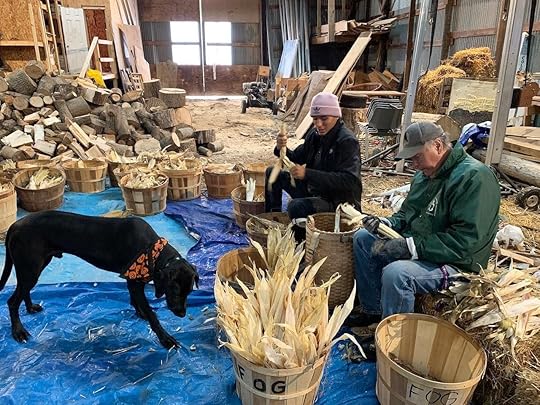
Photo: Ganondagan State Historic Site/Facebook
It wasn’t just invading armies and missionaries who drove white corn out of Iroquois favor. The corn itself is labor-intensive to prepare. It’s also not nearly as sweet as most modern, commercially available varieties.
White corn cannot be grown to the universal heights and sizes of commercial yellow corn, which means it can’t be picked by automation. It must all be picked by hand — a lengthy process that is only the beginning of a long journey from field to plate.
Each ear must also be de-husked by hand, hulled, roasted, and sometimes ground into cornmeal. It can sometimes take days to complete this process, making it far more complicated to turn into a meal than the simple canned corn one can buy at the store.
And for all that work, the end product doesn’t provide a gloriously sweet reward. White corn is more like hominy than yellow corn and has an earthy, nutty flavor. Typically it’s used in soups, salads, and vegetable medleys. White corn flour can also be used to make mash, masa, and some bread.
But like so many foods that aren’t bred for mass consumption, the reward isn’t so much in a satisfying flavor as it is in satisfying your body.
“Slow corn is a slow food,” Jemison says. “The body breaks it down slowly, it’s not high in sugar. Sweet corn is bred to be high in sugar, that’s why people like it. Our corn isn’t like that, we’ve been raising it for 1,000 years, and people have gotten away from it.”
Realizing the advantages white corn would provide their people, John Mohawk and Yvonne Dion Buffalo began growing it on the Cattaraugus Reservation south of Buffalo, New York. They urged others on the reservation to plant it in their gardens in an effort to encourage food sovereignty.
But when the couple died in 2005 and 2006, the Iroquois White Corn Project went on hiatus. A few years later, Jemison, who’d been heavily involved in the original project, restarted operations at the Ganondagan Historic Site, the only such site in New York State devoted to Native American history and culture.
“I knew [Mohawk] had the equipment in a cabin on the reservation,” says Jemison, who serves as the historic site’s manager. “So I asked if I could lease the equipment until I had the money to pay for something bigger and moved the project to Ganondagan.”
After moving the equipment required to cultivate the corn, Jemison and his team set up shop in an old farmhouse on the site and have been going ever since. They use a coffee roaster for much of the white corn roasting and hold an annual husking bee after the fall harvest to remove all but the three husks closest to the corn.
He’s set up a 501c3 called Friends of Ganondagan that employs young people looking for their first jobs. The project, Jemison says, helps the community in multiple ways.
“We’re helping people entering the job market learn the responsibility of showing up on time and being consistent,” he says. “And we are giving the public and our people a healthy food — everything from the people we obtain it from to the way we handle it.”
White corn catches on outside of the reservation
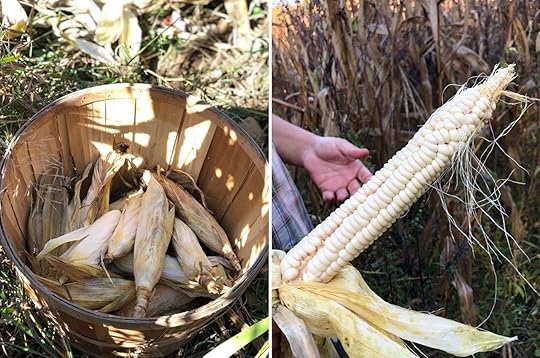
Photo: Ganondagan State Historic Site/Facebook
Currently, Jemison’s team is only cultivating about five acres, planting half the land at a time. It produces about 5,000 pounds a year, much of which is consumed by Iroquois people. But it’s also sold in local restaurants, at the regional grocery chain Wegmans, and in farmers’ markets as far away as New York City.
In nearby Canandaigua, Juan Gavara has found success using the white corn at his Mexican restaurants Rio Tomatlan and Ferona. A Mexican-American originally from San Jose, California, Gavara says the white corn has been the closest ingredient he’s found to replicating the flavors he finds south of the border.
“I was trying to get the flavor of the corn tamales I would get in the south of Mexico,” Gavara says. “It was something I just couldn’t find around here. When you get white corn tamales, it carries the flavor of the grasses. It’s a natural, earthy flavor.”
Gavara uses the white corn flour to make tamales at his restaurants, as well as huaraches – a sort of masa flatbread grilled on the plancha and topped with beans, meat, vegetables, crema, and cheese. He’s also found success using white corn in soup and vegetable specials and has put on beer, mezcal, and tequila pairing dinners with Ganondagan using its white corn.
“I like working with Ganondagan because they have a purpose, and they actually have a good product,” Gavara says. “They’re trying to bring culture and trying to get people to recognize [white corn’s] importance. And they are able to pull off an ingredient like this, when they call somebody like me, it’s an honor, you know?”
But more important than artisan dinners and Wegman’s shelves, the Iroquois White Corn Project has spurred a renewed interest among the Iroquois to begin cultivating their historic food.
“It now has become a kind of a homegrown movement to see our own foods raised,” says Jemison. “This is going on locally, people are doing what they did for hundreds of years, remaking, gradually, that knowledge of that work that it takes to produce your own food. We wanted our own community to take up this process. And we’ve started to take back the task of raising food in our own territory.” 

More like this: 11 important Native American heritage sites in the US that you need to visit
The post The Iroquois White Corn Project will reintroduce traditional ingredients to New York appeared first on Matador Network.
Virtual Cinco de Mayo Happy Hour
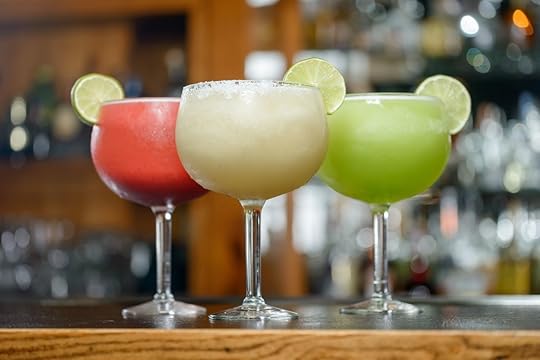
Though it may well have been St. Patrick’s Day the last time you left your house, believe it or not, Cinco de Mayo is literally only a week away. Time flies when you never get dressed. And even though it’s highly unlikely any of us will be slamming tequila shots with strangers to commemorate the Battle of Puebla, the birthplace of the frozen margarita machine wants us all to celebrate anyway.
On Tuesday, May 5, Visit Dallas will be throwing, to our knowledge, the biggest Cinco de Mayo party in the world on its YouTube channel, dubbed the United States’ Official Cinco de Mayo Happy Hour. The event will run from 5:00 to 7:00 PM Central Time. Yes, they realize that’s 3:00 PM on the West Coast. They also realize time has been a pretty relative concept for the past six weeks.
Two chefs from the city’s vaunted Margarita Mile will host the happy hour: Dean Fearing of Fearing’s and Julian Rodarte of Beto & Son. During the event, you’ll learn all about the history of the margarita, the history of Cinco me Mayo, and maybe pick up a few mixology tips along the way.
Though the margarita has been around a long time, it wasn’t until 1971 that Dallas restaurateur Mariano Martinez — likely tired of his bartenders lying about the blender being broken every time someone ordered a frozen margarita — invented the frozen margarita machine. Since then, the machine has revolutionized how we drink margaritas, turning this once rocks-based drink into a slushy, poolside favorite.
Leaning into its sweet, tart, boozy history, Dallas launched the Margarita Mile app-based tour in 2018, encouraging guests to travel the city sampling creative margs from different landmark restaurants, visiting its diverse neighborhoods along the way.
Though you can’t really take Big D up on the offer right now, the hope is this Cinco party whets your appetite for when travel to Texas is a thing again.
“America’s Official Cinco de Mayo Happy Hour is our way of spreading margarita cheer from Dallas,” Visit Dallas Chief Marketing Officer Frank Librio said via a press release.
So fire up your frozen margarita machines, or just pick up a shaker next time you go to the grocery store. Cinco de Mayo isn’t completely canceled this year, and though you may be celebrating with a much smaller crowd than usual, at least all your tequila-based bad decisions won’t go much further than your front door. 

More like this: 5 essential stops on the Margarita Mile in Dallas
The post Dallas is throwing a virtual Cinco de Mayo party for all of the United States appeared first on Matador Network.
2020 set to be hottest year recorded
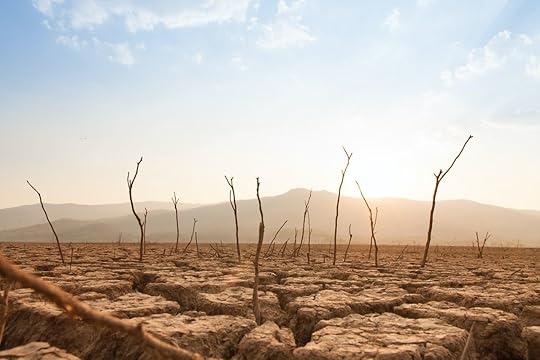
Because of the coronavirus pandemic, hundreds of thousands of flights have been canceled around the globe, and the rush-hour traffic that typically snarls urban areas has disappeared. As a result, cities around the world have seen massive drops in air pollution, sometimes accompanied by the presence of wild animals in places they haven’t been seen recently.
While no one wants to celebrate a pandemic, environmental groups and forward thinkers have noted one big silver lining in this strange time — people around the globe may finally realize the lasting effect we have on the natural environment.
Not to rain on the 2020 parade — it’s already rather soaked — but this change isn’t happening overnight. According to a report in The Guardian, 2020 is on track to be the hottest year on record, surpassing the “instrumental temperature record” set in 2016. Despite a temporary reduction in carbon emissions, the concentration of CO2 in our atmosphere continues to rise as a result of under-mitigated, long-term pollution.
“We are very unlikely to be able to notice any slowdown in the built-up of atmospheric GHG levels,” said Karsten Haustein, a climate scientist at the University of Oxford, to The Guardian. But we have the unique chance now to reconsider our choices and use the corona crisis as a catalyst for more sustainable means of transport and energy production (via incentives, taxes, carbon prices etc).”
The website globalclimateindex.org, which tracks carbon emissions and their atmospheric impact, has our total estimated carbon emissions at 2.33 trillion tons and rising by the second. The only scientific way to combat these emissions is to reduce humankind’s output while simultaneously removing carbon from the atmosphere.
Our weekly environmental column, The Climate Win, recently looked at a viable way each person can remove their carbon. It’s definitely a start, but as an individual, your best course of action is still to work to reduce, reuse, and recycle in your daily life and to support continued scientific and technological advancement in major polluting industries like transportation and agriculture. 

More like this: NASA releases 50-year timelapse of the earth and moon for Earth Day
The post Despite the drop in air pollution, 2020 is still on track to be the hottest year on record appeared first on Matador Network.
Australia begins easing its lockdown

A glimmer of hope amid the global COVID-19 pandemic comes from Australia, which announced today that it will ease the lockdown measures that have been in place over the last month. As infection rates are reportedly down to 1 percent compared to 25 percent four weeks ago, Health Minister Greg Hunt told Reuters, “We are winning but we have not won yet.”
The Australian government has recorded over 13,000 cases of the virus to date, with approximately half concentrated in New South Wales, the country’s most densely populated region. It was projected that around 10 percent of Australia’s population would become unemployed if the lockdown remained in place until the end of June. The government’s decision to ease the confinement measures is part of a wider effort to help the economy recover.
The ease of restrictions is already underway as Bondi Beach and two nearby beaches are set to reopen today. It was further announced that beginning on Friday, NSW will allow up to two adults to visit another person’s home while continuing to observe strict social distancing guidelines. “For many people, they’ve been cooped up in their homes for a number of weeks, and with the exception of exercising, medical needs or buying what they need to or going to work, many people have been isolated in their homes,” Gladys Berejiklian, NSW’s premier and leader of the NSW Liberal Party, told local media.
The Australian government has currently tested around 1 percent of the population, although states set out to expand testing to all citizens as soon as possible. Australia’s precise mandate regarding testing has not been announced yet, though the country’s Chief Medical Officer Brendan Murphy mentioned a possible scaling up by using the help of private laboratories in addition to the public labs that have been responsible for testing so far.
As the lockdown begins to ease, the authorities are encouraging citizens to download the “contact tracing” smartphone app in order to stay up to date with the spread of the disease. To date, 10 percent of Australia’s population has downloaded the app called CovidSafe. Regarding privacy concerns related to the tracing, Minister for Government Services Stuart Robert told The Guardian, “There is no geolocation, there is no surveillance, there is no tracking,” emphasizing that the app will be used by health officials for the sole purpose of identifying the areas that are most likely to be infected.
It is hoped that a combination of widely available testing and effective contact tracing could provide the support that is needed to overcome COVID-19 in Australia. 

More like this: NYC will convert over 40 miles of streets into pedestrian zones next month
The post Australia is easing its lockdown by opening beaches and allowing home visits appeared first on Matador Network.
Sea angel photos and video

A sea angel might sound like one of the mysterious creatures that live in Hogwarts’ Great Lake, but it’s actually a sea slug that lives in the cold waters of the Arctic, subarctic Atlantic, and Pacific oceans.
While diving under the ice in the White Sea, in Russia’s Arctic, marine biologist and photographer Alexander Semenov captured amazing footage and images of sea angels.
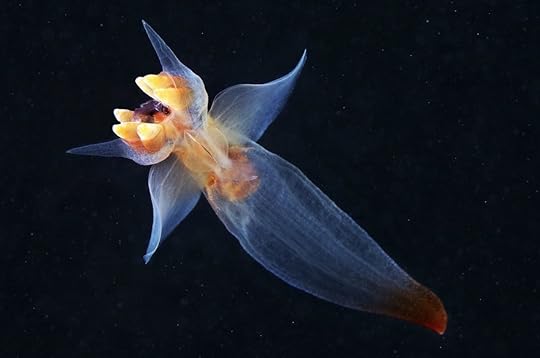
Photo: Alexander Semenov/Aquatilis/YouTube
The tiny sea slug is every bit as beautiful as its name suggests. It resembles the image we have of an angel, with a white, translucent body and wing-like appendages. It is also very graceful as it free-floats.
Semenov, who is the head of the divers’ team at Moscow State University’s White Sea Biological Station, specializes in scientific macrophotography in natural environments. According to his Flickr profile, “This practice makes it possible to observe animals that cannot be properly studied under laboratory conditions, such as soft bodied planktonic organisms or stationary lifeforms living on the seafloor. My personal goal is to study underwater life through camera lenses and to boost people’s interest in marine biology.”
Semenov is no stranger to photographing the unique residents of the deep sea. He and his team have created a science project called Aquatilis, which is dedicated to studying and photographing the ocean’s most unusual creatures. 

More like this: Rare footage shows a humpback whale nursing her calf in Hawaii
The post Marine biologist captures extraordinary footage of sea angels under the ice in Russia appeared first on Matador Network.
Matador Network's Blog
- Matador Network's profile
- 6 followers



